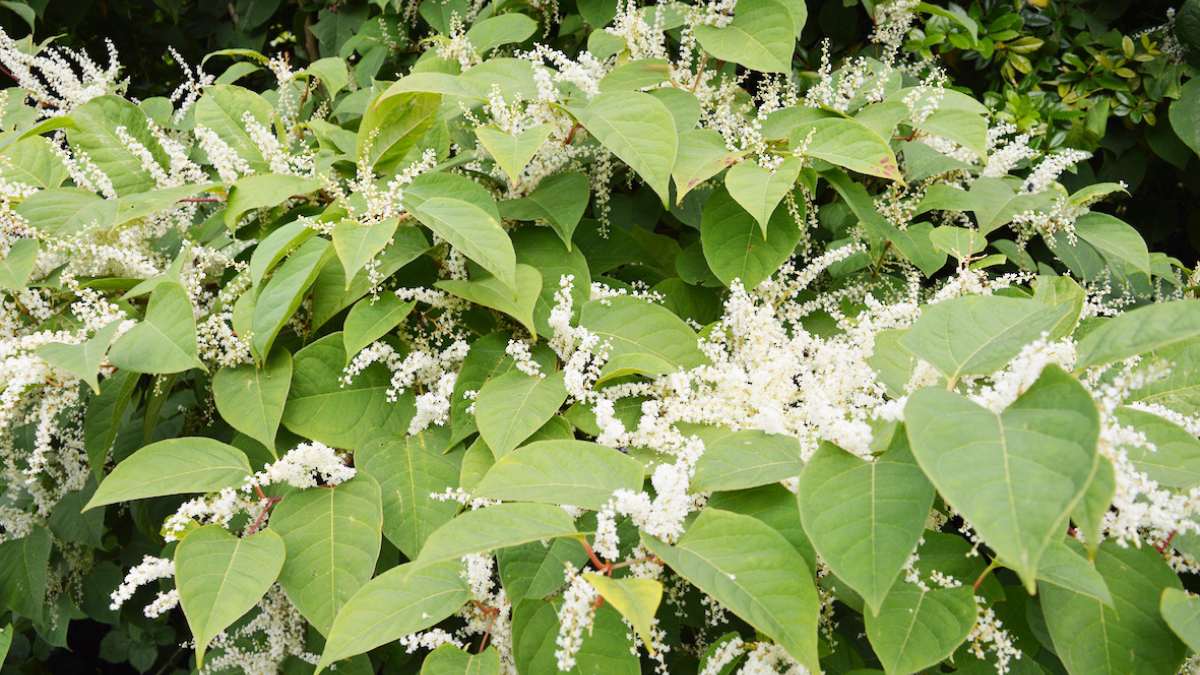
Japanese Knotweed has been called one of the most dangerous and pervasive plants. It can be found in private and public properties and has the capacity to grow through foundations and take over the surrounding landscapes as well. This can greatly reduce the value of property and many mortgage lenders will refuse to grant a loan if they see that Knotweed is present on the property or even the surrounding properties.
Table of Contents
How close is it to me?
Japanese Knotweed is a very widespread problem internationally. Environmental agencies have developed an app that tracks the presence of knotweed and more than 6000 locations have been identified. This is important Information for people looking to buy property in certain areas but would like to avoid dealing with knotweed. You can use this map to see the various records of knotweed sightings in your local area.
Environet UK suggests there are several different ways to address the problem of knotweed, but you will probably find that you need a combination of various tactics to properly address a problem with well-established knotweed.
Some effective methods of controlling Japanese Knotweed are:
Killing it with an herbicide
Cutting to the ground
Digging out the rhizomes
Smothering it with tarps
Professional removal services
Can I get rid of Japanese Knotweed myself?
Treating a plague of Japanese Knotweed can be done on your own but if the situation has become well-established the task will be difficult and very time-consuming. Japanese knotweed grows at a rate of 10cm a day, so you will have to be very fast and effective with your removal process. To successfully kill japanese knotweed growing in your yard, you will need to take the following steps.
No two infestations are quite the same or will require the same techniques. Permanently getting rid of Japanese knotweed will require you to follow the tasks below.
Identify Japanese Knotweed and begin a plan to prevent further growth and damage.
Cut down the knotweed including all the canes and stalks. Cut down as close to the ground as possible and then remove all the cuttings from your garden.
Apply a weedkiller with a Glyphosate base. Apply this weed killer immediately after you have cut down the knotweed and make sure you only spray the affected area as this potent weed killer will destroy all plants it comes in contact with.
Wait for about 7 days before you begin pulling the weeds. This will allow the herbicide enough time to reach the roots and begin the eradication process. After 7 days, begin pulling all the knotweed from the garden and be sure you are pulling the weeds up from the roots.
Mow the plants weekly. To prevent the plague from spreading, you will want to mow the affected area at least once a week as this will weaken the plant’s resolve, although it will not kill the knotweed.
Reapply Glyphosate. Sad to say, despite their potency, even glyphosate weed killer will not completely kill knotweed either. You will have to reapply this poison to the area twice per year until the entire plant has died out.
Contact the professionals at Environet. Don’t expect that your efforts will be immediately successful. If your DIY attempts at destroying Japanese Knotweed have failed, call in a professional.
How do you burn Japanese Knotweed?
Once Japanese Knotweed has been cleared from the area, the waste plants must be disposed of properly, or they will simply grow again in a new spot. Here are some ways to accomplish this:
Bury the plant behind a root barrier
Have professionals handle this task
Have the waste treated by specialists and taken to licensed landfill
Although any of the aforementioned tasks can be effective, they all run the risk of potential problems if the seeds manage to escape en route. One of the best methods of disposing of Japanese Knotweed is to have the stalks, leaves and foliage completely burned and incinerated.
The consequences of not controlling Japanese Knotweed are scathing and anyone with extensive knotweed on their property may incur a £5,000, and a custodial sentence. This includes allowing this invasive wed to spread out to neighboring properties. For this reason, it is important to have the process done properly the first time and all vestiges of the Japanese Knotweed properly eliminated.